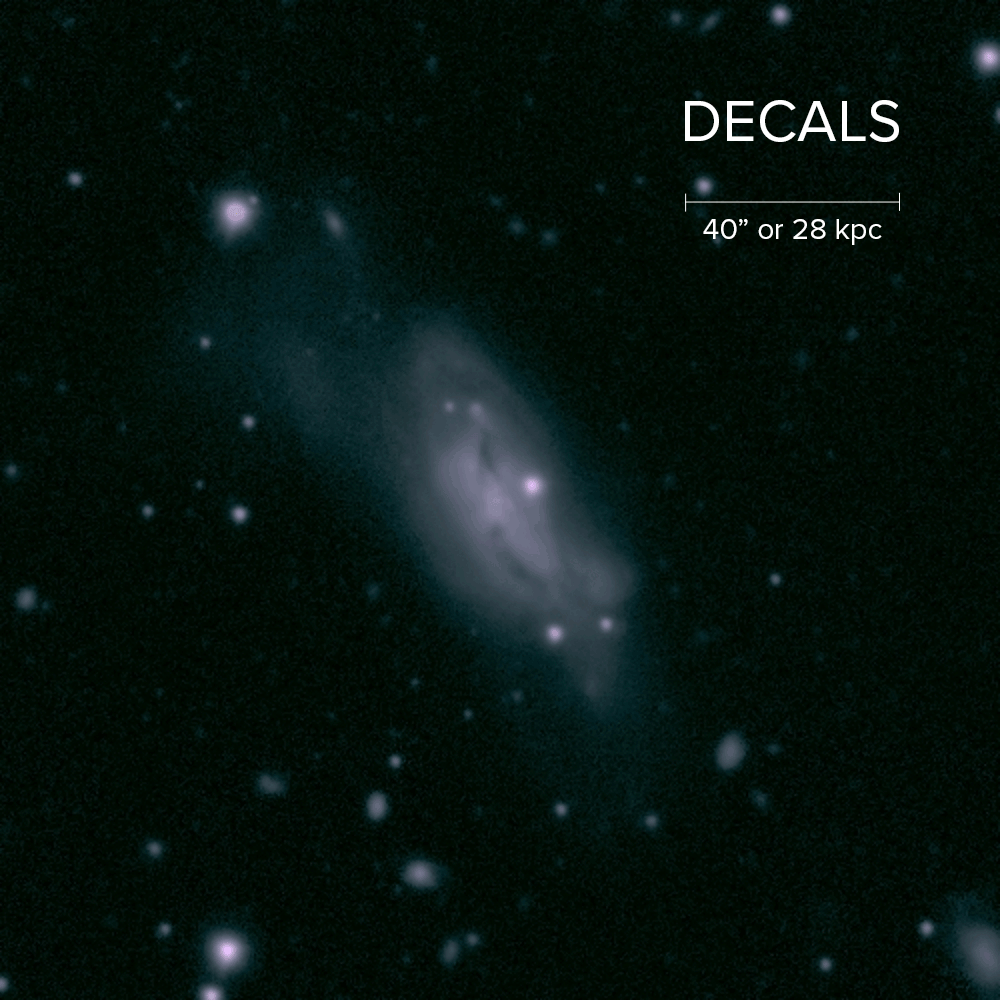Galaxies often collide with each other in a slow process called merging. The supermassive black holes at their center can also merge over time. Astronomers have found two such black holes that have met following a merger. They are not colliding yet – they are instead feasting on the gas swirled around from the merger. They are the closest known binary supermassive black holes to Earth.
They are located just 750 light-years from each other and located in a galaxy, called UGC4211, 500 million light-years from Earth. Thanks to the power of the Atacama Large Millimeter/submillimeter Array (ALMA), researchers were able to zoom right into the core of this galaxy and spot the voracious black holes.
“Simulations suggested that most of the population of black hole binaries in nearby galaxies would be inactive because they are more common, not two growing black holes like we found,” lead author Michael Koss, a senior research scientist at Eureka Scientific, said in a statement.
“ALMA is unique in that it can see through large columns of gas and dust and achieve very high spatial resolution to see things very close together. Our study has identified one of the closest pairs of black holes in a galaxy merger, and because we know that galaxy mergers are much more common in the distant Universe, these black hole binaries too may be much more common than previously thought.”
The merger of supermassive black holes is also a convoluted process. They do not just automatically collide, even approaching each other. The pair in this study is likely experiencing dynamical friction due to the gas surrounding them, which will make them lose orbital energy and get closer and closer over 100,000 years. The final handful of light-years will take a lot longer. Stars and the remaining gas will very slowly help push them together over a time closer to 180 million years. Only when they are very close will the effect of gravitational waves be significant enough to lead them to a collision. However, if pairs like this are common, then we will detect plenty of these events with future observatories.
“There might be many pairs of growing supermassive black holes in the centers of galaxies that we have not been able to identify so far. If this is the case, in the near future we will be observing frequent gravitational wave events caused by the mergers of these objects across the Universe,” added co-author Ezequiel Treister, an astronomer at Universidad Católica de Chile.

Multiwavelength observations of UGC4211. Image Credit: ALMA (ESO/NAOJ/NRAO), M. Koss et al (Eureka Scientific)
The work is also a celebration of multiwavelength astronomy. Several different telescopes were employed to get the best understanding of this incredible pair.
“Each wavelength tells a different part of the story. While ground-based optical imaging showed us the whole merging galaxy, Hubble showed us the nuclear regions at high resolutions. X-ray observations revealed that there was at least one active galactic nucleus in the system,” said Treister. “And ALMA showed us the exact location of these two growing, hungry supermassive black holes. All of these data together have given us a clearer picture of how galaxies such as our own turned out to be the way they are, and what they will become in the future.”
The findings were published today in The Astrophysical Journal Letters, and presented in a press conference at the 241st meeting of the American Astronomical Society (AAS) in Seattle, Washington.
Source Link: Supermassive Black Holes Spotted Feeding Side By Side In Nearby Galaxy